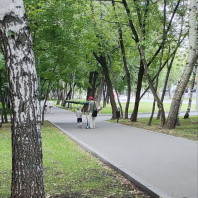К Ростовской вспышке
 doktor_killer — 13.06.2013
Защитник детей, видимо не врач и точно не эпидемиолог заявил, что
серозный менингит привезли из Китая "Источник инфекции пока не
найден, подозревается перенос из Китая, так как многие родители
работают на рынках". http://www.gazeta.ru/social/news/2013/06/13/n_2969693.shtml
doktor_killer — 13.06.2013
Защитник детей, видимо не врач и точно не эпидемиолог заявил, что
серозный менингит привезли из Китая "Источник инфекции пока не
найден, подозревается перенос из Китая, так как многие родители
работают на рынках". http://www.gazeta.ru/social/news/2013/06/13/n_2969693.shtmlЭто политизированная чушь!
Вспышки энтеровирусного менингита хорошо описаны, как правило водного происхождения (заражение через воду). Известны с тысячами заболевших Latvia (2006 and 2010), Serbia (2010), Greece (2007), Spain (2007) and France (2005). В 2003-2005 годах такие же были в странах бывшего СССР, в Новосибирске, Алма-Аты и других городах.
В 2004 году, мы сделали расследование вспышки в Алмаа Аты. Опубликовали в каких-то тезисах конференции в США.
Переводить мне лень:
Introduction: During the period May–July, 2004, 202 clinically diagnosed viral meningitis cases were reported to the Republican Sanitary Epidemiological Department (RSED) in Almaty City, Kazakhstan. This was almost 7 times higher than the reports received for the same period in 2003 (33). Upon request by the Ministry of Health, the Applied Epidemiology Training Program participants carried out an investigation in Almaty City from Aug 2 to Aug 22, 2004. The objectives of the investigation were to describe the epidemiology of the outbreak and to identify risk factors for disease transmission.
Methods: The descriptive part of the investigation was based on review of hospital records for inpatients during the period May 15-August 8, 2004. In order to identify risk factors for acquiring the disease, a case-control study was carried out; neighborhood controls were randomly selected and individually matched to cases on age (± 2years); the case to control ratio was 1:2. For the purpose of this investigation, a probable viral meningitis case was defined as a person hospitalized in Almaty City during the period May-August, 2004 with diagnosed meningitis that was based on clinical grounds only and who has lived there for at least three weeks before disease onset. The case control study was limited to children 8-14 years old, and all cases who were in hospital during the time of the field work-between Aug 2 and Aug 8, 2004 were recruited. Date of onset and clinical information was abstracted on all cases from hospital records. For the case-control study, additional information on demographic variables, different water exposures, contact data, travel outside Almaty and history of recent illness were collected by person-to-person interview, with the relevant time of exposure measurement being two weeks prior to the case disease onset. Cerebra-spinal fluid (CSF) samples taken from all meningitis patients were tested by culture for bacterial pathogens in local hospital laboratories. Additionally, serum, CSF, and stool samples, which were collected from all meningitis patients (20), who were admitted to hospital during the period July 21-29, were sent to NAMRO-3 lab in Cairo-Egypt and were tested by Polymerase Chain Reaction (PCR) and viral culture for Enteroviruses, West nile, Sindbis, Rift valley, Sandfly naples, and Sandfly sicilian viruses. Disease incidence rates were calculated for different age groups, by sex, and place of residence; rates were based on population census data obtained from RSED. Conditional logistic regression was used to study the association between the exposure variables and the disease.
Results:
Descriptive part: The epidemic curve showed that the outbreak started in the second half of May with a trend that was still on the increase by Aug 8. Altogether, 643 meningitis cases, satisfying the investigation case definition, were identified during the study period; the crude three-month incidence was 53.3/100,000 population. There was a significant difference in the three month incidence by age: the highest incidence was observed among children between the ages 3-9 and 10-14 years (307.5/100,000, 164.7/100,000 respectively), the lowest was among those above 15 years of age (3.1/100,000), p-value<0.001. Among the six city rayons, the highest incidence was in Turksebski rayon (81.8/100,000), the lowest was in the Bostandekski rayon (37.1/100,000); the difference in incidence between rayon was statistically significant (p-value<0.001).
Case-Control study: 80 cases and 160 matched controls were studied. 17.5% of the cases swam in Kapchigai Lake near Almaty and 11.3% swam in other lakes and rivers outside Almaty city within two weeks before disease onset. 14.3% used any of the city’s closed swimming pools. 11.3% of the cases drank water from any open unprotected water source. 18.8% of the cases had a known contact with a patient with acute upper respiratory tract infection (ARTI) within two weeks before disease onset. In the multivariate analysis, using conditional logistic regression, the following factors was significantly associated with the meningitis: Swimming in rivers and lakes (excluding Kapchagai Lake) outside Almaty (OR 9.0, 95% CI 1.8-44.8, p=0.004), drank from unprotected source (OR 6.0, 95% CI 1.5-24.5, p=0.01), swimming in closed swimming pools (OR 4.3, 95% CI 1.3-14.9, p=0.02), contact with a patient with ARTI (OR 4.0, 95% CI 1.5-10.9, p=0.01), swimming in Kapchagai Lake (OR 3.3, 95% CI 1.2-9.1, p=0.02).
Laboratory studies: 19 out of the 20 CSF samples tested positive to Enteroviruses by PCR. 4 CSF samples gave positive viral culture for ECHO-30 virus. All samples were negative for other viral agents
Conclusion and recommendations: there is evidence that an outbreak of viral meningitis caused by an Enteroviruses, probably ECHO-30, occurred in Almaty City around May 2004. The evidence from the case-control study points out to the exposure to open water source and being in contact to a patient with ARTI as risk factors for viral meningitis.
There was a delay in the investigation of this outbreak and that was due to the fact that viral meningitis is not on the list of notifiable diseases.
We recommend that surveillance for viral meningitis should be intensified during the summer period along with strengthening lab capabilities. More research is needed to identify why water sources might serve as sources for infection.
Конечно 30 зарегистрированных случаев в Ростове, это лишь малая часть заболевших, лёгким больным и особенно без менингиальных симптомов (а таких большинство) диагноз не поставят.
В Ростове есть смертность от этого заболевания, что относительно редко бывает. Это может говорить о высокой заражающей дозе вируса в начале эпидемии, учитывая длительный инкубационный период (до 21 дня), число случаев еще возрастет, но смертность повысится не должна, то есть, я думаю, может быть еще много больных, но тяжелых больных будет меньше.
Кипятите воду! Не пускайте детей купаться!
|
|
</> |

 Выдвижная дверь на кухню
Выдвижная дверь на кухню  Города Италии. Марке. Часть 1
Города Италии. Марке. Часть 1  Дыбр
Дыбр  Всякое разное
Всякое разное  Независимое застолье
Независимое застолье  Из черники самоуверенно смотрит на нас котик от primuscat
Из черники самоуверенно смотрит на нас котик от primuscat  Der Spiegel:- Она принесла олимпийский флаг!
Der Spiegel:- Она принесла олимпийский флаг!  Корейские лабиринты
Корейские лабиринты  СЁДНЯШНЕЕ//
СЁДНЯШНЕЕ// 



